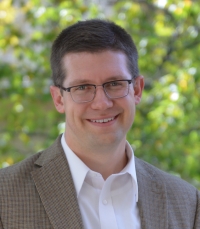The Ohio State University

Visualizing Charge and Spin Dynamics Using Ultrafast XUV Spectroscopy
102 Cardwell Hall
Directly observing electron dynamics at surfaces is required to elucidate the material properties that determine efficiency of many applications. This includes energy conversion processes such as photocatalysis and photovoltaics as well as information processing using optoelectronics and spintronics. Toward this goal of visualizing the interfacial dynamics that underlie these applications, we have developed a tabletop instrument for femtosecond XUV spectroscopy of surfaces. This method combines the benefits of traditional X-ray absorption spectroscopy, such as element, oxidation, and spin state resolution, with surface sensitivity and ultrafast time resolution. Using this technique, we investigate charge and spin dynamics in materials with applications ranging from photocatalysis to optical control of magnetic switching. In one example, we compare electron dynamics in two metal oxide semiconductors: Fe2O3 and CuFeO2. We find that photoexcitation of these materials gives rise to similar initial excited states, which then evolve along distinct relaxation pathways. Specifically, ultrafast thermalization in the layered delafossite structure of CuFeO2 gives rise to separation of electrons and holes across layers in less than 1 ps. This significantly weakens the exciton binding energy and helps explain why Fe2O3 exhibits low efficiency while CuFeO2 is an effective photocatalyst for CO2 conversion. In other example, we investigate the spin dynamics in the magnetic oxide, CoFe2O4. Results of these measurements show that this material exhibits ultrafast spin crossover upon photoexcitation with unity quantum efficiency making it promising candidate for optical control of magnetic switching at room temperature. Work is currently underway to expand these and related capabilities to a broad user community through the creation of the NSF National eXtreme Ultrafast Science Facility (NeXUS) at Ohio State University. This facility will be the first user accessible attosecond beamline in the U.S. and promises to become a focal point of interdisciplinary ultrafast science.
